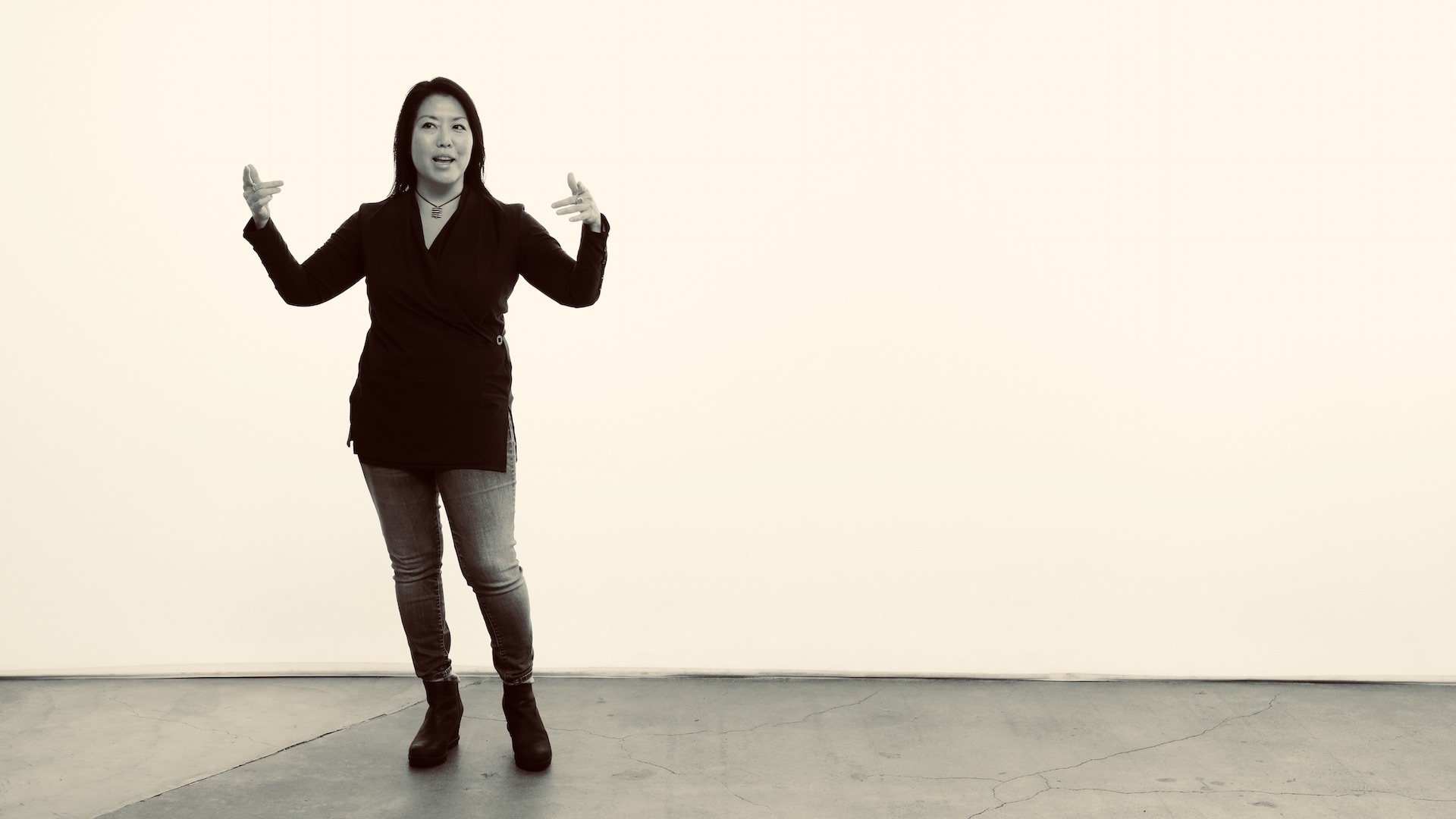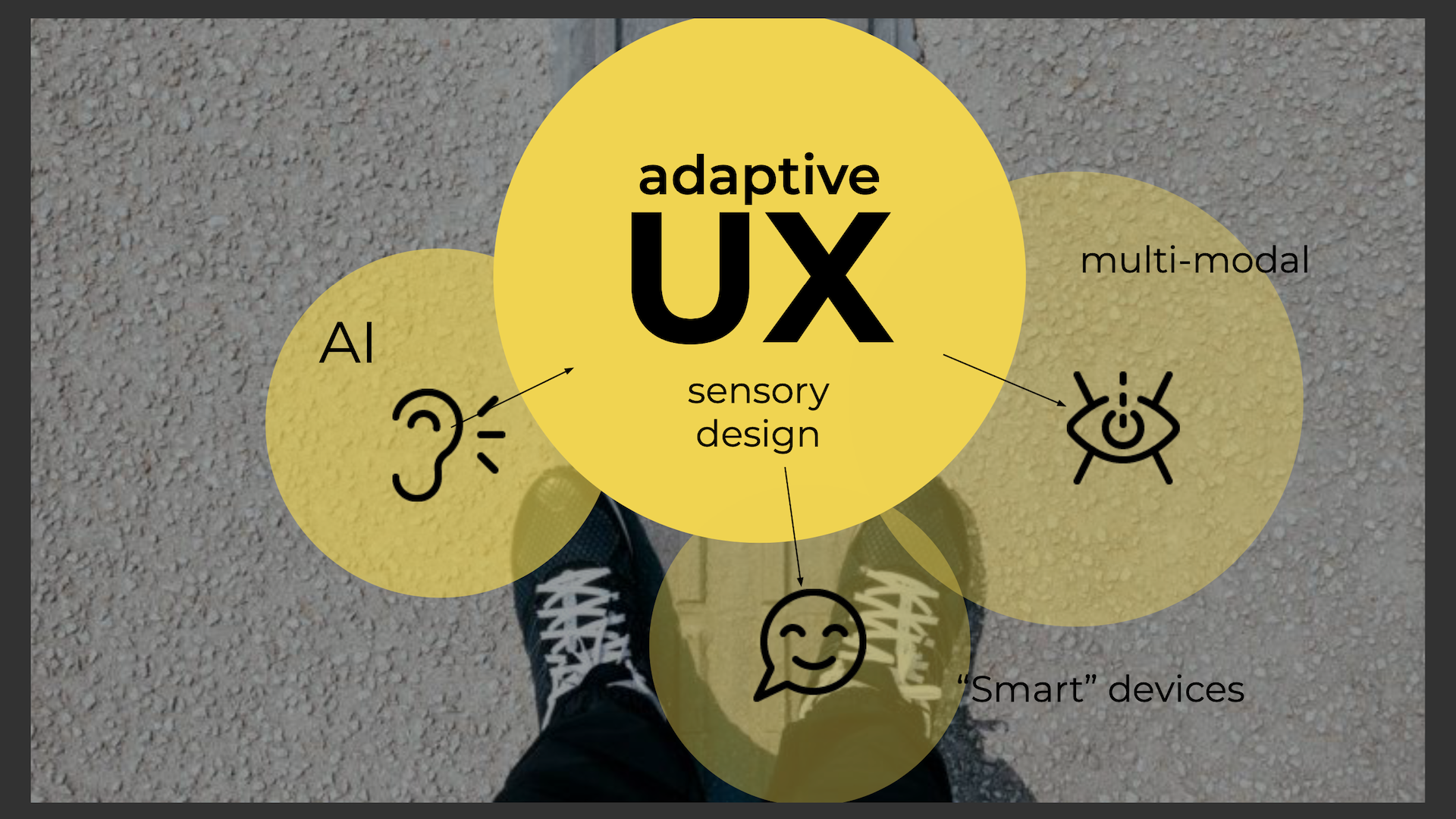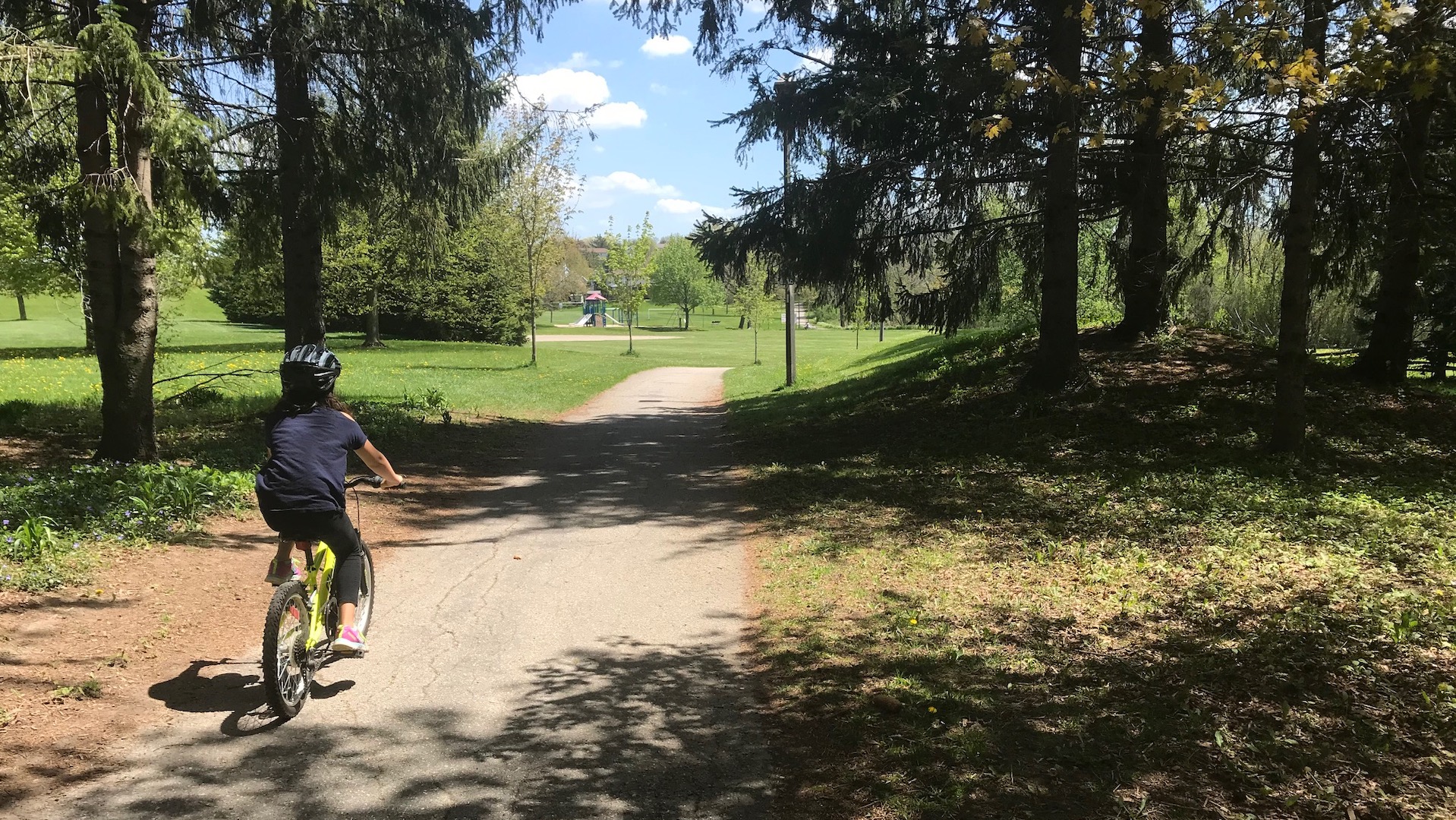A few years ago, design ethnographer Kelly Goto’s father went into hospice care.
Before that, Goto wasn’t focused on universal design. But that all changed when she struggled to get her father from the bedroom to the bathroom. That’s when universal design — or the lack of it — became clear.
“Until you hit some kind of situation like that, you never realize that a two-inch curb on the edge of a shower or something like that can affect the entire experience so much. Or not having a hose on a shower head. It was just really amazing,” Goto said during Fluxible TV.
Goto recently talked about universal design and rethinking adaptive experiences on Fluxible TV, an online broadcast that replaced Fluxible, Canada’s UX Festival this year after the pandemic cancelled all in-person events.
Ron Mace coined the term “universal design”. The concept referred to designing all products and the built environment so that it could be used as much as possible by everyone, no matter their age, ability, or status in life. While Mace was an advocate for the rights of people with disabilities, universal design was about benefitting the largest number of people, no matter their abilities.
“Universal design is really just good design,” said Goto.
And it’s becoming more top of mind as the population ages. In Canada, one in four people will be aged 65 or older by 2030. Seniors will make up nearly 25 per cent of the Canadian population by then. In the U.S., people aged 65 or older will outnumber those under 18 by 2034 for the first time in U.S. history.
Those demographics have created an urgency around caring for an aging population in both Canada and the U.S. Canada, for example, has focused on creating age-friendly communities, which are communities that are accessible and inclusive, both socially and physically. (Both the City of Waterloo and the City of Kitchener are labelled age-friendly communities.)
The population shift has led to a desire to keep people in their homes longer — a phenomenon known as “aging in place,” said Goto.
But in the U.S., only 10 per cent of homes are “aging ready” — that is, they have a step-free entry, and a bedroom and full bathroom on the first floor.
Aging in place has driven the need for designers to think not just about universal design, but about product design that can adapt to many different environments and devices. It’s given way to a new UX tool kit: a sensory reality that includes touch, smell, and voice, said Goto.
“In today's world, we are not just designing one experience. It really does cross over into different contexts and different places and different experiences happen. So it's not just located on one device or on one screen,” said Goto.
Designers have the ability to adapt today’s experiences to meet the needs of the largest number of people possible, especially from a research perspective, said Goto.
During her Fluxible TV segment, Goto told the story of Colin, who lost his vision in his junior year of high school due to a genetic disease. Colin uses his phone as an assistive device — it comes with a built-in screen reader. But most mobile apps aren’t accessible, even though they should be.
About 6.2 million Canadians aged 15 and over report having at least one disability. Globally, 15 percent of the world’s population experiences some form of disability.
Add into that the number of times people are situationally disabled — new parents carrying an infant, or trying to hear someone talk in a room where loud music is playing — and most people have been situationally disabled at one point or another in their lifetime.
“The main idea is we’re looking at a diverse way that your product or service can work, how you can be aware of people with a wide range of abilities. So really, thinking about ability — not disability, but ability,” said Goto.
Voice recognition and AI recognition has gotten better over time, said Goto. More and more, designers are working with chat-based experiences or conversational design.
“Really what we’re looking at is creating a comfortable environment where people are informed,” said Goto.
And that means adapting experiences to fit a wide range of people of various ages with different abilities.
Goto herself has had to adapt her work.
She used to do home interviews or follow along as people went about their day, but has had to adapt with the pandemic and constraints around time and budget. But there are still ways to gain a better understanding through remote research, she said.
“One of the things I've done recently with the aging population is have caretakers conduct interviews for me in person, and use Whatsapp to send me the details,” she said. “Or if the technology is difficult for someone to use, I have a family member kind of assist in the process.”
It’s all about building understanding across experiences. And there are several ways designers can do that, said Goto.
Designers could, for example, put on glasses to simulate what it’s like for someone with colour blindness or low vision.
But even better?
Spend a day, even virtually, with someone who has different abilities or has a different age than your core audience, said Goto.
“We’re no longer designing just for ourselves. Thinking about adaptive UX, sensory design, using AI, multimodal experiences — this new world, it’s happening now. We’re the designers that are going to be designing the future so everyone needs to get on board,” said Goto. “My daughter was asking me, ‘What does UX stand for? Does it stand for universal experience?’ I was like, you know what? It should.”





